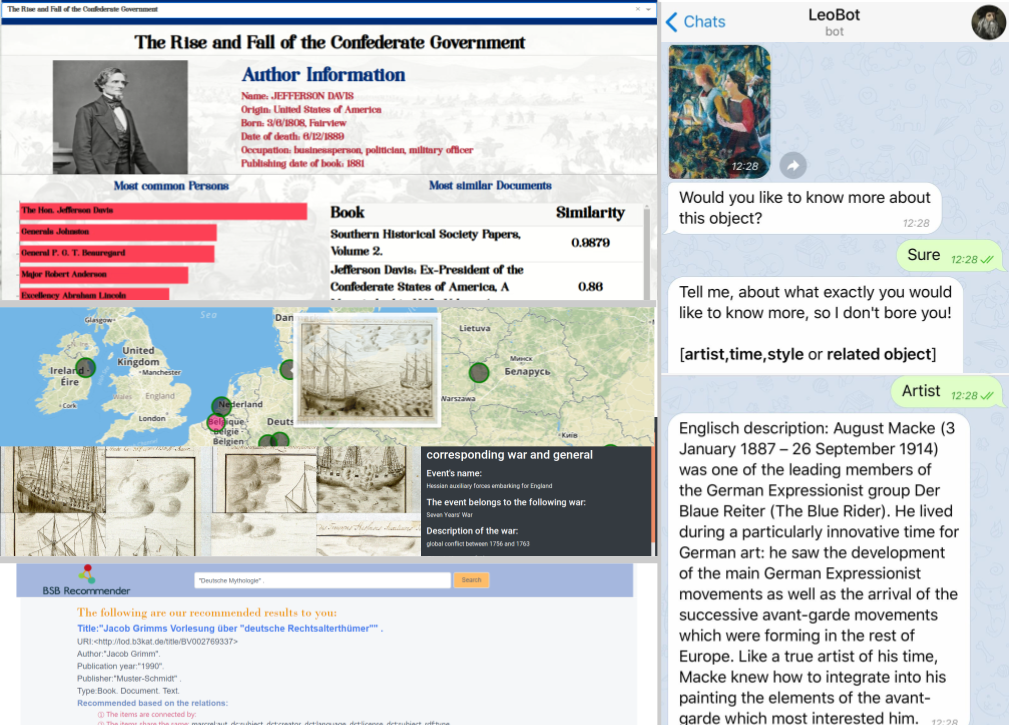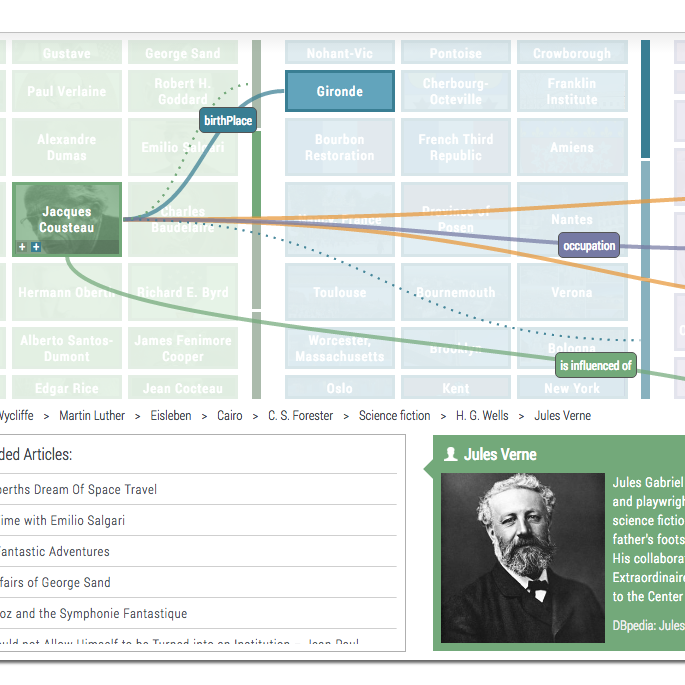Linked Stage Graph

Archives today are publishing their cultural heritage data on the Web for exploration. However, for archive novices the traditional archival structures often are not intuitive and difficult to understand, and thus challenges data access and consumption. To tackle this problem, Linked Stage Graph was developed, a Knowledge Graph on the foundation of historical data about the Stuttgart State Theater. The data was made available by the Baden-Württemberg State Archives for the Coding da Vinci hackathon. This demo paper contributes the KG, a SPARQL endpoint, named entity extraction and linking to existing authoritative KGs as well as a dedicated user interface for exploration.
Linked Stage Graph was created together with Jörg Waitelonis (yovisto GmbH) and Paul Felgentreff.
Linked Stage Graph was created together with Jörg Waitelonis (yovisto GmbH) and Paul Felgentreff.
Info Webpage Demo SPARQL Endpoint Paper Publication
Information Service Engineering Student Projects (Wintersemester 2018/19)

The outcomes of the master student course Information Service Engineering at KIT are presented here. Four student groups chose open cultural heritage datasets, developed and evaluated their own web-based applications, thereby utilizing and improving their knowledge in semantic web technologies, natural language processing (NLP), and machine learning (ML). The data used in this course are open cultural heritage datasets made available by the Coding da Vinci initiative, which confronted the students with interesting and mostly uncharted data to explore.
TECNE - Knowledge Based Text Classification Using Network Embeddings

TECNE is a tool for Knowledge-Based text classification using network embeddings. TECNE does not require any labeled training data to classify an arbitrary text. Instead, it relies on the semantic similarity between entities appearing in a given text and a set of predefined categories to determine a category which the given document belongs to.
refer - Semantic Annotation and Relation Exploration

refer is a tool for semantic annotation and visualization of textual content on the web. As part of refer Named Entity Linking enables content authors to semi-automatically annotate their texts with semantic entities from the English DBpedia and automatically visualize the enriched content for the users in an exploration environment that displays relations between entities, conten-based recommendations, additional information in infoboxes visualizations as well as time references.
refer was created together with Jörg Waitelonis (yovisto GmbH) and Joscha Jäger (filmicweb) and was partially funded by the Potsdam Media Innovation Center. The complete refer toolset was released as a wordpress plugin and is available for download.
refer was created together with Jörg Waitelonis (yovisto GmbH) and Joscha Jäger (filmicweb) and was partially funded by the Potsdam Media Innovation Center. The complete refer toolset was released as a wordpress plugin and is available for download.